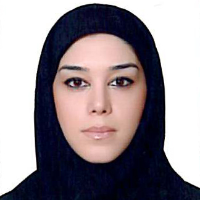Rethinking the evolution of intellectual systems of architectural aesthetics based on anthropocentric approach
Author(s):
Article Type:
Research/Original Article (دارای رتبه معتبر)
Abstract:
Accepting architectural aesthetics in the form of human-centered approaches is a field that has not received sufficient attention to identify it in terms of theorical content. There has always been bewilderment at answering which theorical model of architectural aesthetics is more comprehensive from this perspective because this qualitative concept has remained vague. Therefore, the question that is raised is that which paradigms have been formed in architectural aesthetics based on anthropocentrism so far? What factors have been the basis of value judgments and evaluation of the views? And what stance have present theoretical models in architectural aesthetics taken regarding the subject of human? Therefore, the purpose of the present study is to examine the history of stances taken by architectural aesthetics regarding the different dimensions of human existence. Accordingly, this qualitative and descriptive-analytical study focuses on typology and comparative study of different approaches of aesthetics with an interpretative view. The significance of identifying human-oriented views arises from the fact that rereading the ideas of aesthetics, which are basically related to human existence, enables us to return to theoretical stances to the subject of environmental perception and development. The results of the study showed that each of the dominant theoretical views from the beginning until now (classic, modern, postmodern) have addressed one or a few of interrelated dimensions of architectural aesthetics from the perspective of human. However, present theoretical paradigm holds the concept of “embodied experience” as the central characteristic of pleasure in architecture. In this view, the basis of aesthetic experience is experimental perception with a satisfactory quality which is achieved through active interaction between objectivity and subjective images of human and space. Moreover, the emotional influence of “embodied perception” values human awareness of architectural work.
Keywords:
Language:
Persian
Published:
Journal of Architect, Urban Design & Urban Planning, Volume:15 Issue: 38, 2022
Pages:
119 to 134
magiran.com/p2449436
دانلود و مطالعه متن این مقاله با یکی از روشهای زیر امکان پذیر است:
اشتراک شخصی
با عضویت و پرداخت آنلاین حق اشتراک یکساله به مبلغ 1,390,000ريال میتوانید 70 عنوان مطلب دانلود کنید!
اشتراک سازمانی
به کتابخانه دانشگاه یا محل کار خود پیشنهاد کنید تا اشتراک سازمانی این پایگاه را برای دسترسی نامحدود همه کاربران به متن مطالب تهیه نمایند!
توجه!
- حق عضویت دریافتی صرف حمایت از نشریات عضو و نگهداری، تکمیل و توسعه مگیران میشود.
- پرداخت حق اشتراک و دانلود مقالات اجازه بازنشر آن در سایر رسانههای چاپی و دیجیتال را به کاربر نمیدهد.
In order to view content subscription is required
Personal subscription
Subscribe magiran.com for 70 € euros via PayPal and download 70 articles during a year.
Organization subscription
Please contact us to subscribe your university or library for unlimited access!




